The most common is the 'moveable frame' beehive, although even this has lots of local variations in exact size and design.
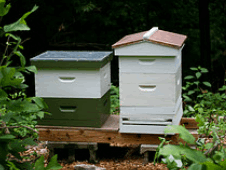
Beekeeping equipment will be one of the first things you will need to think about. When you start beekeeping it is easy to get carried away and buy all sorts of beekeeping equipment, most of which you do not really need and could easily do without.
Having said that, there are 5 pieces of beekeeping equipment that are essential. Let's take a look at them now.
There are many different types of bee hives available, so the first question is which type will you buy. There is no right or wrong answer to this question - they all have their advantages and disadvantages (see the page on Beehives for more information).
The most common is the 'moveable frame' beehive, although even this has lots of local variations in exact size and design.

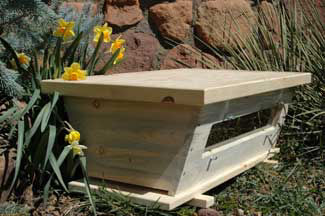
Top Bar Hive
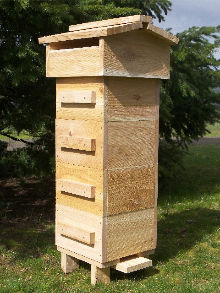
Warre Hive
For this reason, it is a good idea to try to handle bees in as many different types of hive as possible. See what works for you before you buy one for yourself. Talk to other beekeepers in your area for advice on what works locally.
This is probably the most important piece of beekeeping equipment you will buy. Be aware that, no matter what protective clothing you wear, if you keep bees, you will get stung!
But the correct clothing will mean that you get stung much less often.
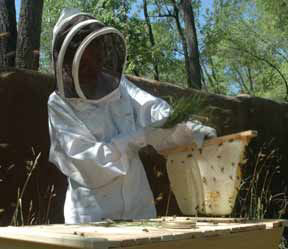
Ideally, you should get a full beekeeping suit and gloves.
As you gain confidence and get better at handling the bees, the stings will become less frequent and you will need less protective clothing. Very experienced beekeepers can handle bees without wearing protective clothing, but it is only through years of experience and learning how not to get stung.
So, as a bare minimum you will need a hat and veil to protect your face and eyes, but really as a beginner beekeeper you would be best to buy a full beekeeping suit which will include a built in veil.
There are many of these on the market. As always, the very cheapest will be the least effective, so go for what you can reasonably afford.
You will also need suitable gloves, especially to begin with.
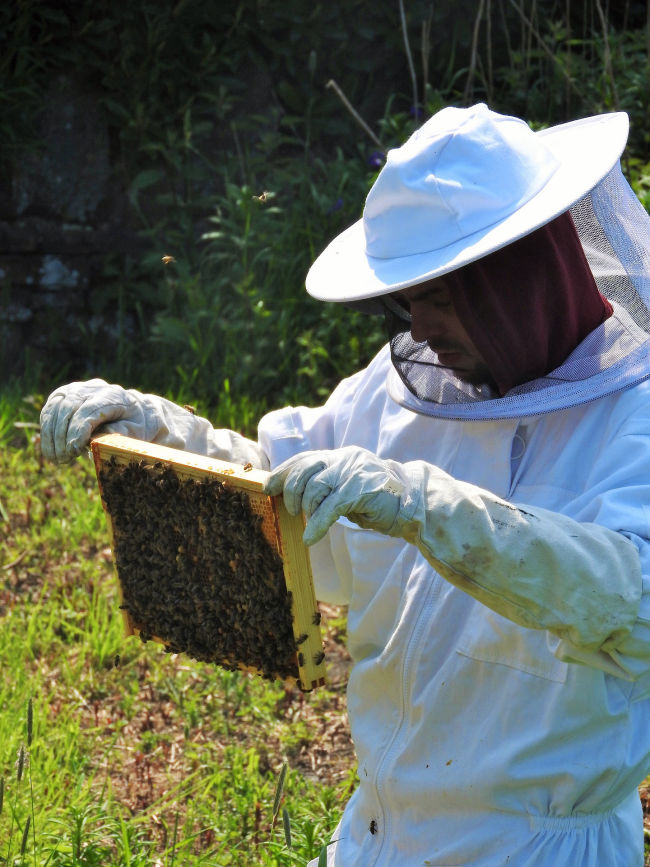
You can use household rubber gloves, although bees will probably be able to sting through these, so you might want to buy specialist beekeeping gloves with gauntlets.
Wearing gloves does make handling bees more difficult. You will be less clumsy without them, and so disturb the bees less when working at the hives.
So as soon as they get a bit of confidence, many beekeepers do not wear gloves at all, but you should still get yourself a pair to start with.

The hive tool is another essential in your beekeeping equipment list.
It is used to prise open the hive, separate the hive bodies, and scrape frames clean. Generally, it is used to separate things that the bees stick together (just about everything) and so is the all purpose tool of beekeeping.
There are different types of hive tool, but the main rule is to buy one with a thin end, as this is much easier to use (and does less damage to the hives) than the thick ended ones which are available.
These are not expensive, but you'll find this to be an invaluable beekeeping tool.
Bee smokers are another absolute must for beekeeping. They are used to make the bees easier to work with.
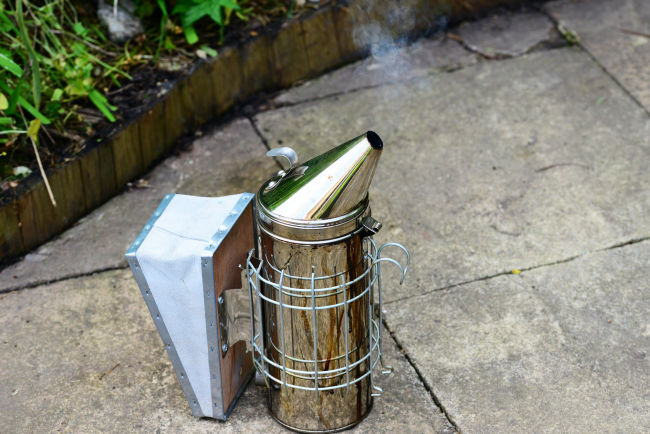
When you gently waft smoke into the entrance of the hive, the bees think that the hive is under threat and instinctively gorge on honey in preparation for leaving the hive if the 'fire' gets worse.
When they are busy doing this, they ignore you as you inspect the hive.
Quite clever really - and essential.
Bee smokers come in 2 sizes (small & large), and can be made out of tin plated steel, copper, or stainless steel. The tin plated steel version is the cheapest, but will probably not last very long, and the copper will not corrode but will bend easily.
Again, go with your budget.
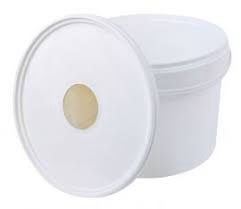
Contact feeder
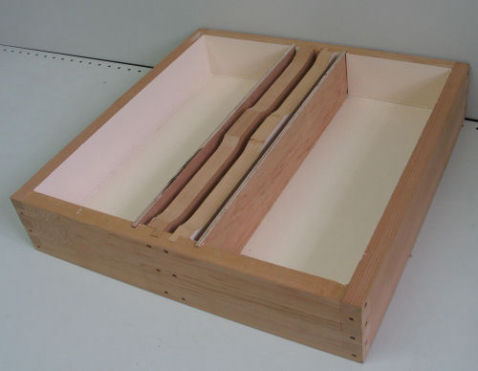
Bulk feeder
(image courtesy
paynesbeefarms.co.uk)
The contact feeder (also known as a bucket feeder) is a small feeder which holds about 2 litres of syrup, so is useful for top up feeding, but not as good for over winter feeding. For this, the bulk feeder is the best. As it holds up to 20 litres, one fill will be enough to keep the hive going for the whole winter.
When you first get bees it is usually a good idea to feed them right away to get them off to a good start, so add a bee feeder to your list of beekeeping equipment essentials.
To start keeping bees, you really do not need any other beekeeping equipment. Maybe later, but not now.
When it comes time to harvest your honey, you will probably need some extracting and honey handling equipment. This can be expensive so, depending on your area, you might be able to borrow or hire this equipment - your local beekeeping association is the first place to try.
Or you could always try building your own honey extractor :)
If you would like to see more about exactly what equipment is available (and how much each thing costs), visit our store here.
Wherever you get your beekeeping equipment, do take the first step into the beekeeping world - you'll not regret it!
And if you haven't already, sign up for our free 7 day beekeeping ecourse here.
6 questions you need to ask before you start beekeeping... and we have the answers!
>> Click here for more...
On the lookout for some bargains?
Visit our Beekeeping Store
>> Click here for more...
So many choices... so what is the what type of beehive should you get?
>> Click here for more...
You'll find lots more information (and some great beekeeping pictures!) on the BestBeekeeping blog
>> Click here for more...
SHARE THIS PAGE!